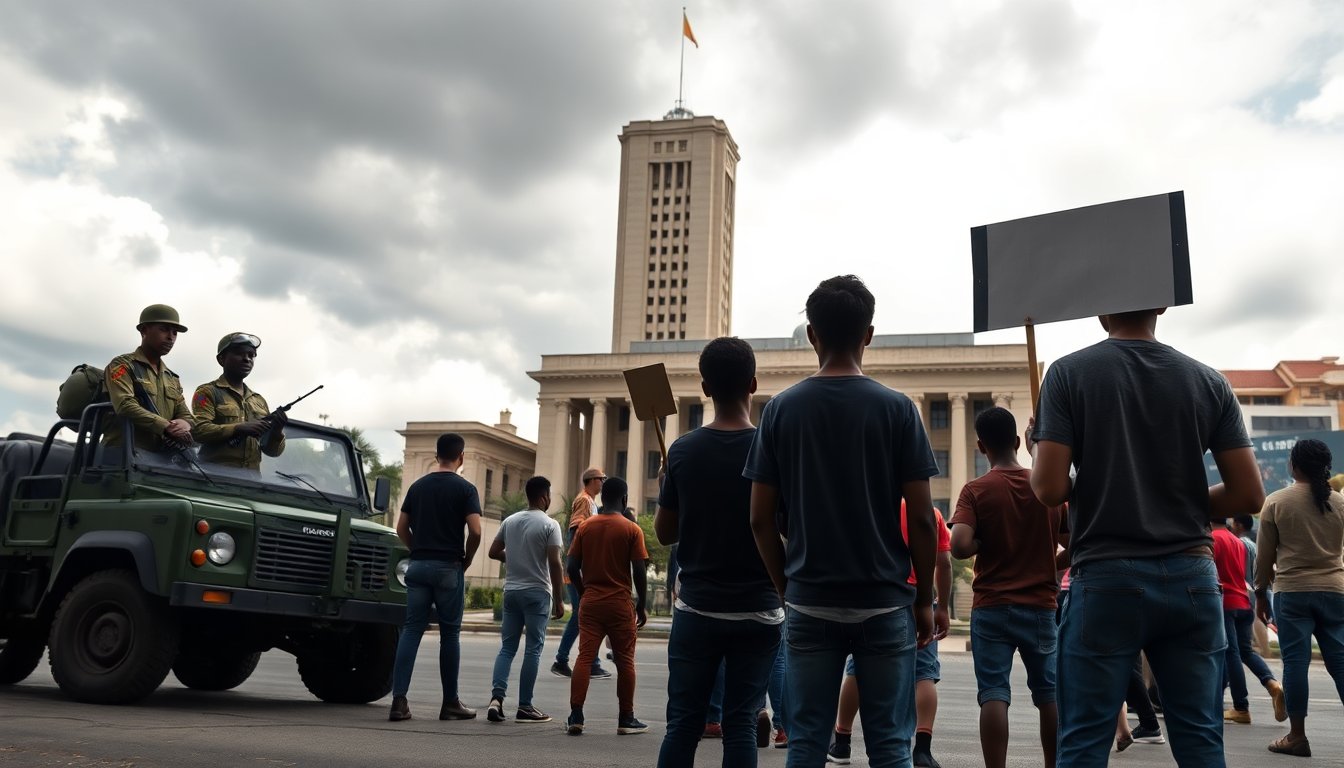Table of Contents
Madagascar, an island nation in the Indian Ocean, is experiencing significant political upheaval as the military has asserted its authority following the departure of President Andry Rajoelina. This development coincides with rising protests led by the youth, who have been actively calling for the president’s resignation. The situation escalated quickly, resulting in the declaration of military rule.
In a recent announcement, Colonel Michael Randrianirina stated that the armed forces have taken control, aligning themselves with the youth-led movement. This declaration came shortly after Rajoelina attempted to dissolve the National Assembly, an action that faced immediate opposition from legislators who had just voted for his impeachment. The colonel’s statement emphasized that only the National Assembly would remain functional, effectively disbanding all other governmental institutions.
Context of the unrest
The unrest in Madagascar began on September 25, ignited by public frustration over ongoing issues such as water and power shortages. What started as a protest regarding basic services quickly transformed into a widespread uprising, driven by discontent with corruption and ineffective governance. This situation mirrors recent protests in countries like Nepal and Morocco, where citizens have also challenged their ruling elites.
Symbolism in protests
In the heart of the capital, Antananarivo, demonstrators gathered at 13 May Square, a location rich in history and lined with palm trees and French colonial architecture. Here, thousands voiced their dissent through dance, music, and banners. Many protesters accused President Rajoelina of being a puppet of France, citing his dual citizenship and the support he received from Madagascar’s former colonizers. Among the crowd, the iconic skull and crossbones logo from the popular Japanese anime series, One Piece, emerged as a prominent symbol of the Gen Z protests.
Colonel Randrianirina addressed the audience, questioning, “Are you ready to accept a military takeover?” The crowd responded with enthusiasm, reflecting a notable shift in public sentiment towards military governance.
International reactions and implications
The international community has voiced significant concern regarding the ongoing political upheaval in Madagascar. French President Emmanuel Macron underscored the necessity of restoring constitutional order while acknowledging the grievances expressed by the youth. He warned of the risks posed by potential military exploitation of the unrest, emphasizing the fragile balance between meeting public demands and preserving political stability.
President Rajoelina’s increasing isolation became apparent following the loss of support from the CAPSAT, an elite military unit instrumental in his rise to power during a coup in 2009. The unit’s recent decision to side with protesters over the weekend represents a pivotal moment. They publicly declared their intention to refrain from violence against demonstrators, even going so far as to escort them through the capital.
The future of Madagascar
Madagascar’s youth face economic challenges amid military control
Madagascar’s population is predominantly young, with nearly 75% of its 30 million residents living in poverty. Economic indicators highlight a concerning trend, with GDP per capita dropping by 45% from independence in 1960 to 2020, according to the World Bank. This alarming economic situation has heightened the frustrations of the youth, who are increasingly vocal about their desire for change.
As the military strengthens its grip on power, Madagascar’s future remains uncertain. The critical question is whether the military can maintain order while addressing the grievances that ignited this unrest. The potential for further instability looms large, as the frustrations of the youth could escalate if left unaddressed. This chapter in Madagascar’s history is still unfolding, and the echoes of discontent are likely to resonate for years to come.


